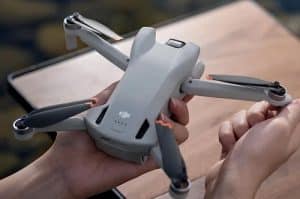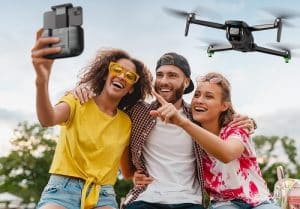How to fly a drone a beginners guide. Starting a drone flying adventure? You’re covered in our beginner’s guide! Discover the fundamentals of drone flying, from takeoff to landing. We’ll provide you with detailed instructions and expert advice to guarantee a seamless and joyful experience. This book will boost your confidence and make flying drones easier, whether you’re a hobbyist or an aspiring drone pilot.
Beginners’ guide to drone piloting. Drones are widely used in film and photography. They are often used by both professional and home filmmakers. These cash-collecting devices are purchased for amusement by many users of unmanned aircraft. Continue reading if you wish to become a drone professional or join this exciting new hobby. We’ll talk about inexperienced drone piloting in this post. You will understand a pre-flight checklist, your drone controller, and certain tactics.
Contents
How to Fly a Drone a Beginners Guide
How well do you know your drone?
Before flying, master your drone. Learn battery performance and controls. Check local drone and air traffic limitations. Explore fresh ideas, links, and tutorials to securely express your creativity.
Although you’ve never flown a drone before, practice makes perfect. Many drones include beginner modes and simulators to help you learn the basics and fly safely without hurting others. Many DJI drones include a phone or tablet simulator with a beginner mode that restricts altitude and speed. Both modes assist novice pilots in acquiring confidence before flying.
Fly Where You Practice?
Explore your surroundings after mastering the controls and flying. Always check the landscape as you arrive. This avoids takeoff and flying surprises. Fly your drone carefully by noting buildings, trees, and power wires. Avoid flying near airports and heliports for safety. Learn local flying laws for safety.
Before every flight, consider topography and weather; wind, rain, and temperature might affect performance. Forecast rain? Postpone your flight. Rain may harm electronics, sight, and communication signals. Wind and temperature might impact flight battery life. So you can land, check your drone’s battery. Winter flying tips.
Drone Controls
Drones have joysticks and buttons. Core controls are the same regardless of size. Today, we’ll explore Mavic, Phantom, and Spark. Once you’ve mastered your drone’s controls, utilize them. This how-to will help you take fantastic drone photos.
- Search for a clearing.
- Connect the drone’s transmitter and receiver.
- Midair cat flip
- Solutions That Actually Work
- The right joystick lowers the drone, and the left raises it. This joystick steers the drone.
- The right stick controls drone movement. The right joystick controls forward, reverse, left, and right.
Many camera buttons are likely. These controls take pictures, record video, tilt and pan the camera, and access menus. Learn each button’s function before flying. Drone controls are simple. Remember the drone’s front to go forward and backward. Keep your drone in GPS mode so it hovers when you stop using the sticks.
Drone Safety Rules You Need to Know
There are several restrictions and regulations for operating a drone, particularly in other nations. The FAA developed a set of safety standards for leisure and commercial drone pilots. Except for the final rule, they are as follows:
1. Fly below 400 feet.
This is simple to perform outside of restricted zones. Commercial flights over 400 feet are unsafe. Depending on where you shoot, this might endanger airplanes or animals. Whatever the shot, stay below 400 feet.
2. Never fly your drone beyond sight.
The first rule applies here. You can’t see your drone over 400 feet. This applies to distance and weather that reduces visibility.
3. Fly above crowds or stadiums
Drones jeopardize privacy. Flying above crowds, vast expanses, or events is dangerous. Flying above stadiums may endanger fans’ safety.
4. Do not fly over groups of people or stadiums
This is a key rule. Drones are banned within 5 miles of airports. Even a little drone may harm an airplane, endangering passengers and crew.
5. Never fly near emergency response sites
Another big limitation is flying drones near an evacuation or natural catastrophe. First responders shouldn’t be distracted by cameras.
6. Do not fly near other aircraft
Always observe this rule. If you hear the plane, land your drone. Safety first!
7. Never fly under the influence
Fly sober. Some individuals ignore this obvious guideline. If you’ve been drinking or otherwise impaired, don’t fly your drone.
FAQs: How to Fly a Drone: A beginner’s Guide
Q. Is drone flying difficult?
Drone flying is actually fairly difficult, especially for a beginner with no practical background in flying anything remote-controlled. This is why many beginners take flying courses or start with flight simulation software. It is always best to know the basics first before actually flying a drone.
Q. What are the rules for flying a drone?
Fly at or below FAA-authorized altitudes in controlled airspace (Class B, C, D, and surface Class E designated for an airport) only with prior FAA authorization by using LAANC or DroneZone. Fly at or below 400 feet in Class G (uncontrolled) airspace. Note: Flying drones in restricted airspace is not allowed.
Q. Do you need a license to fly a drone?
Do I need a license to operate a drone? If you intend to use the drone for commercial use, i.e. take a picture or film a video planning to sell it, you need to get a Remote Pilot Licence (RPL). You will also have to register your drone, classified as a Remotely Piloted Aircraft (RPA).
Related:




